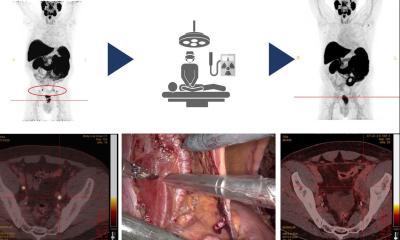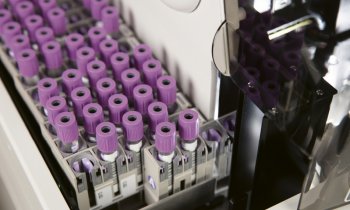
Image Source: Adobe Stock/kkolosov
News • Oncology & Cancer
Research uncovers alternate mechanism for producing key protein in metastatic prostate cancer
Like the better-known prostate-specific antigen (PSA), prostate-specific membrane antigen (PSMA) is a biomarker that can tell physicians much about a patient's metastatic prostate cancer. PSMA is a protein on the cell surface of most prostate cancers; scanning for it with positron emission tomography (PET) can indicate where in the body prostate cancer has spread, and it can be targeted with a newly approved radioactive therapy. In 15%–20% of patients with castration-resistant prostate cancer, however, PSMA production stops at advanced stages of the disease.
In a new study in the journal Nature Cancer, Dana-Farber Cancer Institute scientists shed new light on the mechanism that raises and lowers PSMA expression in prostate cancer cells. The findings may help physicians select PSMA-targeting therapies for specific patients.
It has long been known that the androgen receptor (AR)—a structure that triggers cell growth in response to the hormone androgen—controls the production of PSMA in prostate cancer cells. In the Nature Cancer study, researchers led by Dana-Farber's Himisha Beltran, MD, and Martin Bakht, Ph.D., found that PSMA expression is lower in liver metastases than in other parts of the body, regardless of expression of the androgen receptor.
They also found that some tumors that test negative for the AR do express PSMA and that some AR-positive tumors don't—which led them to look for a control mechanism that doesn't involve the AR. Their search revealed that the HOXB13 protein as a key regulator of PSMA: when castration-resistant prostate cancers go without the AR, HOXB13 can control PSMA on its own. This and the discovery of an "epigenetic" mechanism for suppressing PSMA demonstrate that the system of PSMA control is more complex than once thought and that prostate cancer has multiple subtypes that may be optimally treated by specific targeted therapies.
The study authors also identified amino acids that are upregulated in metastatic prostate tumors low in PSMA. The discovery may lead to new biomarkers that complement PSMA imaging in identifying prostate cancer subtypes.
Source: Dana-Farber Cancer Institute
12.04.2023











